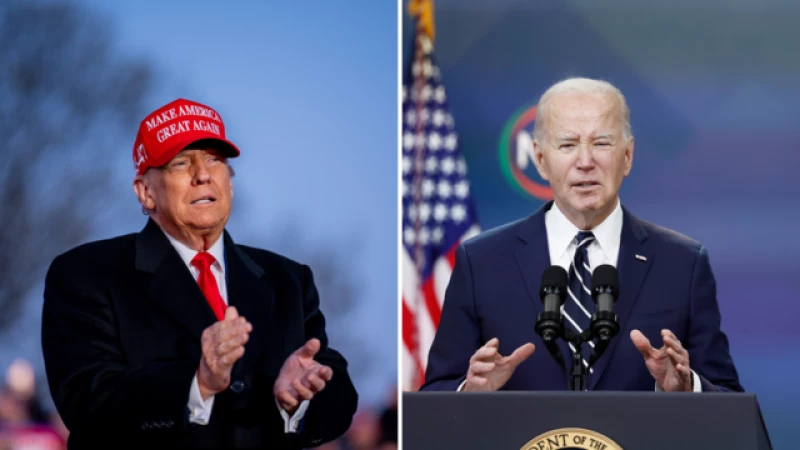For years, they've been three of the handful of states that decided presidential elections. In the summer of 2020, amid the COVID pandemic and lockdown debates, sizable majorities in Michigan, Wisconsin, and Pennsylvania rated state economies badly. Incumbent President Donald Trump trailed in polls, and ultimately, the three close contests were won by challenger Joe Biden.
Four years on, some things haven't changed. We have the same two candidates locked in close — effectively even — races. And there are still negative views of the economy that now, as then, weigh on the 2024 incumbent, President Biden.
Given the views of these candidates, the summer campaign here might be an argument about who is the less bad option: both candidates elicit more feelings of worry than confidence, more insecurity than security, and plenty of anger.

With inflation looming large in their minds, most voters don't say there's even been improvement in their state's economy post-pandemic: only a quarter say it has improved in the years since, with about half saying it has actually gotten worse.
And few say their own finances are better compared to before the pandemic. This may be an essential part of their memory — comparing to before the coronavirus.
Amid those poor economic numbers, here's a change that's working against Mr. Biden: he narrowly trails Donald Trump on "understands the needs and concerns of people like you." That means he's losing an edge he enjoyed in the summer of 2020 when we asked voters in Pennsylvania and Wisconsin this question.
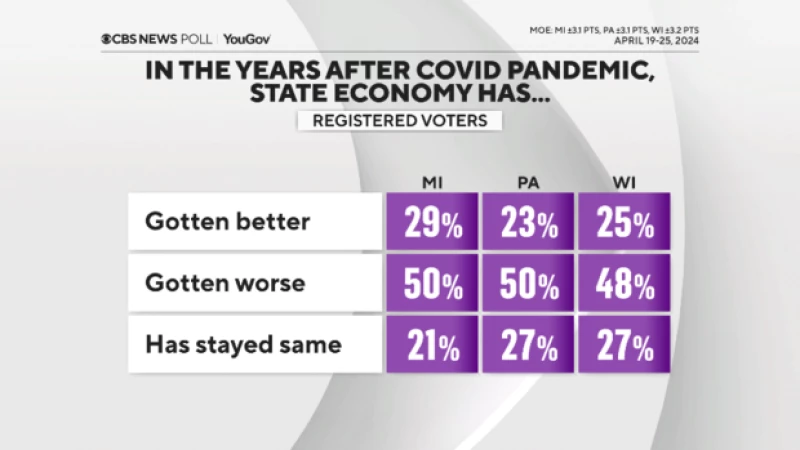
The choice between Mr. Biden and Trump now predominantly draws out negative feelings like worry and anger.
Twice as many say Mr. Biden makes them feel worried as say he makes them feel either secure or confident. He trails Trump on making voters feel confident and secure.
Trump, for his part, elicits more feelings of anger, which does fuel opposition to him, helping keep Mr. Biden in these races, despite sour economic views.

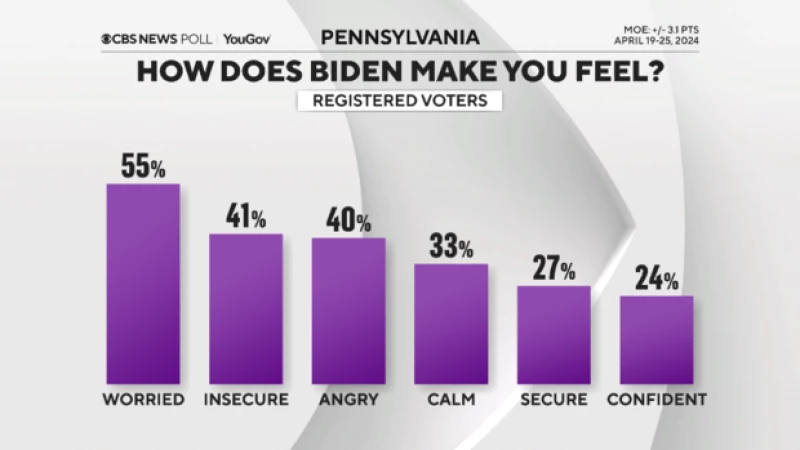
Another change is that voters are less likely to see Mr. Biden as "moderate" now than they were in 2020, blunting another item that worked to his advantage four years ago. The percentage of self-described moderates who see Biden as a moderate has decreased.
Finances and the economy
As we've seen nationwide, voters today recall their state's economy "when Donald Trump was president" quite differently from the way it was viewed back in 2020, specifically. Ratings of the economy were quite low that year. So it may well be that when they think back about the Trump years, they're thinking back to before the pandemic. That matters a lot for how they perceive their choice of Trump and Mr. Biden now.
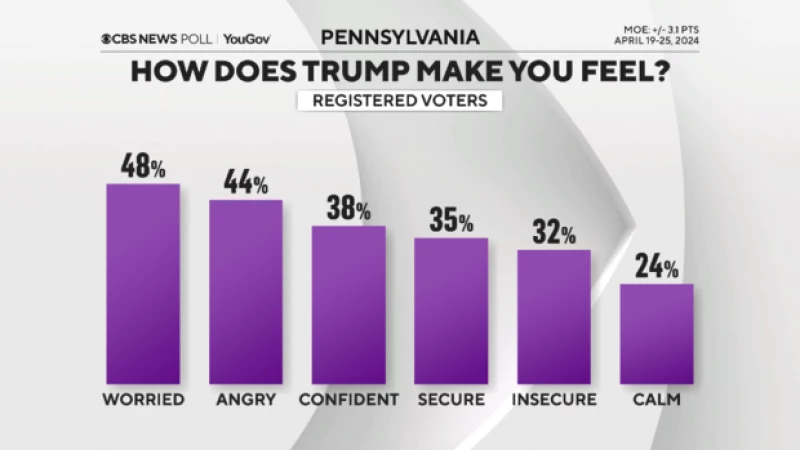
Reflecting on the economy during the Trump era without considering the impact of the pandemic in 2020 leads to a more positive view when comparing it to the current economy under Mr. Biden. However, a significant number of voters express that their financial situation today is worse than it was before the pandemic.
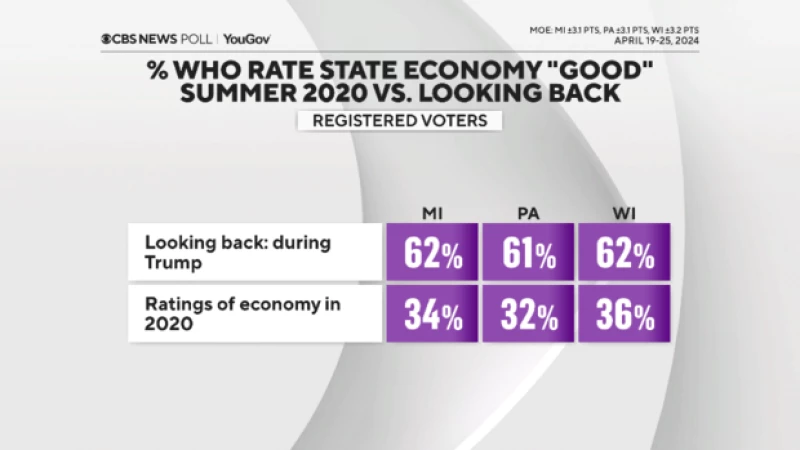
As a result, there is a considerable desire among voters to revert back to the previous administration: in all three states, many believe they would be in a better financial position if Trump were back in office. Consequently, a large number of these voters are showing support for Trump.
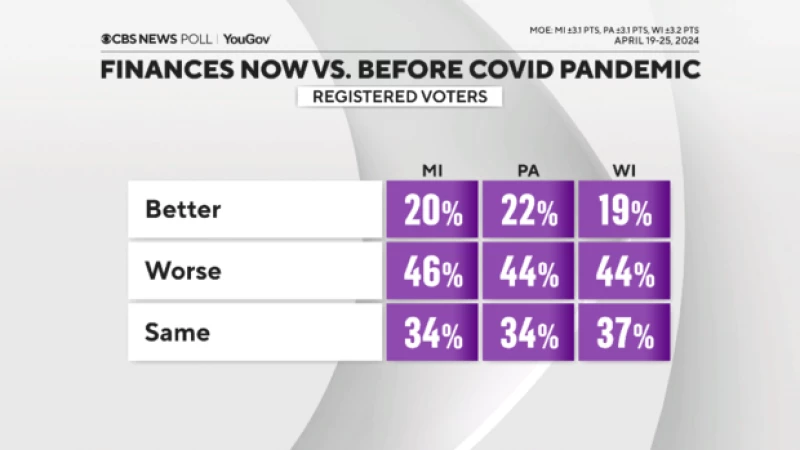
In Pennsylvania, Mr. Biden's perceived advantage in prioritizing the middle class over the wealthy, especially in comparison to Trump, has diminished since the fall of 2020. While voters initially thought Biden's policies would be less favorable to the wealthy, the gap between the two candidates has now narrowed.
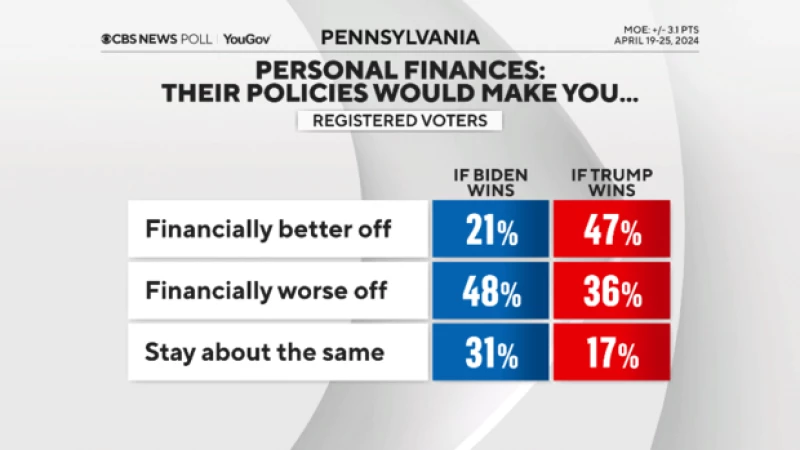
Understanding the implications
Given the prevailing economic pessimism, what is keeping Biden competitive in the race?
One key factor is the presence of other significant issues.
Both campaigns are engaged in a battle to define the crucial aspects of this year's election. The Biden campaign is emphasizing perceived threats to democracy, such as rights infringements, while the Trump campaign is focusing on critiquing the incumbent's handling of the economy.
While many voters consider both the economy and democracy as essential, a larger number prioritize factors like the economy and inflation over the state of democracy when making their decision.
That advantages Trump, partly because he does a little better among those prioritizing the economy than Mr. Biden does with voters ranking democracy highly.

Abortion
It may be a state issue on policy, but it's national politically — especially for Democrats — and it does accrue to their advantage.
Sizable numbers in these states express anger about Roe v. Wade being overturned — most of them blame Trump for it, and they're overwhelmingly backing Mr. Biden.
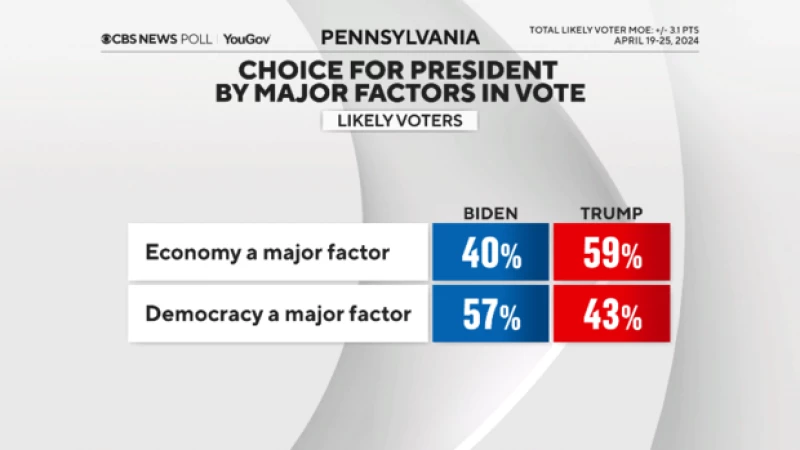
Most voters in Pennsylvania, Wisconsin and Michigan report paying attention to events in other states like Florida and Arizona, so what individual states do has some national resonance.

That said, the race is more competitive among voters who are dissatisfied but not angry about the Dobbs decision that overturned Roe v. Wade.
These are voters to watch in the coming months. They could become potential persuasion targets for the Biden campaign, because most of them do favor abortion being legal in their state but don't blame Trump for the overturning of Roe. The question will be whether they increase in anger, in blame of Trump, or in the salience of the issue overall.

Overall, abortion is still not as salient across the whole electorate as economic concerns. It trails far behind the economy and inflation, among other factors in each state.
And how people feel about the financial impact of the next president is more closely related to their vote than whether they want abortion to be legal or not.

Trump's trial: not much of a factor
Trump's trial in New York isn't much of a factor at the moment because it's mostly Democrats and Biden voters who are paying attention, in the form of hearing or reading a lot about it.
Overall, voters are equally likely to be concerned that the charges are politically motivated as they are that Trump committed a crime.
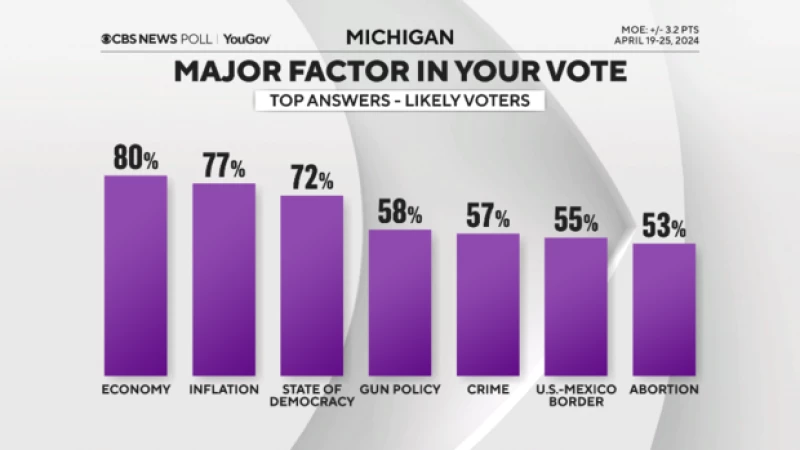

Breaking down vote patterns
Here's another notable change from 2020, and it's within each candidate's support set, perhaps reflecting voter displeasure with having this rematch:
Each candidate's "very strong" support number among backers is lower than it was in 2020 even though, at the same time, very few of them say they would ever consider switching candidates.
So, with this kind of dynamic, it would not be surprising to see lower turnout rates or even higher third-party voting than the last election saw.

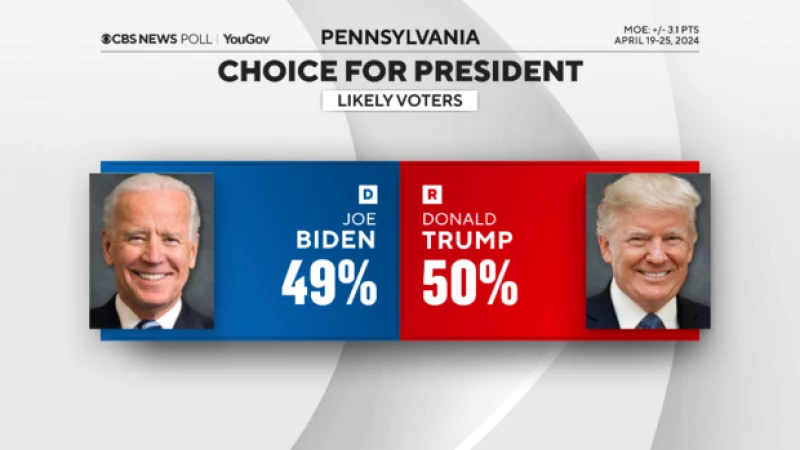
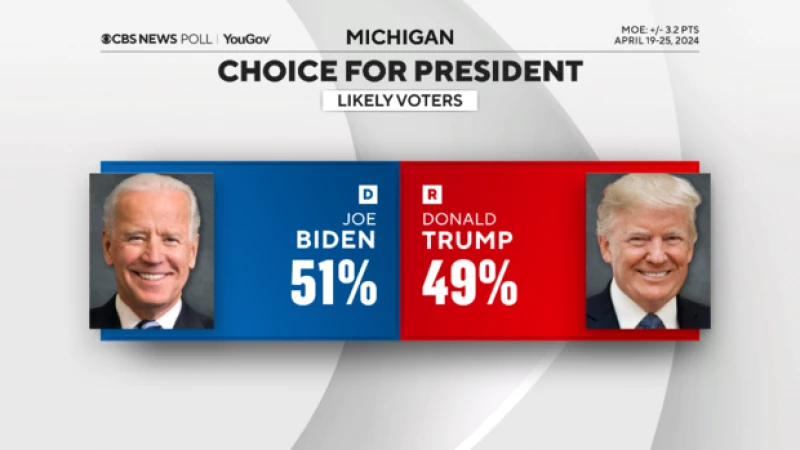
Biden and young voters
There's been a lot of discussion about Mr. Biden's slipping approval among younger voters and about his handling of the Israel-Hamas conflict. However, approving is not the same as voting. One is an evaluation, the other, a choice.
The young voters who want Mr. Biden to tell Israel to stop its military actions in Gaza are still voting for him, at about the same rate as younger voters overall. That said, expressed vote choice now isn't the same as turning out in November, and as a group, young voters aren't as likely to say they will.
A Biden administration proposal that is popular with younger voters is canceling some student loan debt. Solid majorities of voters under 45 approve, and those who do are backing Mr. Biden in large numbers. And if they aren't backing him, those who approve of the plan are more likely to say they would consider voting for him.
Third-party tests
In political polling, third-party measures can mean a lot of things. Sometimes they're genuine support, sometimes they're a way to voice a protest early in a cycle. Third-party candidates have tended to poll better than they perform at the ballot box in recent years, as some voters dissatisfied with major-party nominees simply don't show up to vote at all. Either way, it'll certainly be a story to watch in 2024 in states where such candidates are on the ballot.
In Michigan, with the presence of Robert F. Kennedy, Jr. the net gap between Mr. Biden and Trump is the same, but Kennedy looks like he's drawing more interest from the kinds of voters backing Trump than backing Mr. Biden.
Most of those picking Kennedy in a four-way ballot test backed Trump initially in a two-way race with Mr. Biden, including leaners.
Kennedy's supporters look more like Republicans than Democrats on a variety of measures, including their views on the economy, immigrants, and Trump's trial, as well as how they voted recently, despite the fact that they often identify as moderates. (That can mean they just don't feel at home in the usual political labels.)
And eight in 10 say Mr. Biden makes them feel worried, while only half say so of Trump.
It's important to consider who picks each candidate, not just where the horse race ends up, when looking at the impact going forward in a campaign.

These CBS News/YouGov surveys were conducted between April 19-25, 2024. They are based on representative samples of 1,287 registered voters in Michigan, 1,306 in Pennsylvania, and 1,245 in Wisconsin. Margins of error for registered voters: Michigan +/- 3.1 points, Pennsylvania +/- 3.1 points, and Wisconsin +/- 3.2 points.


